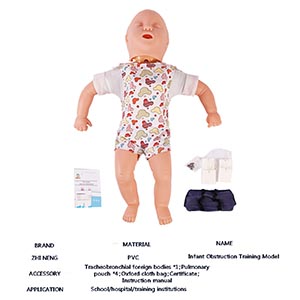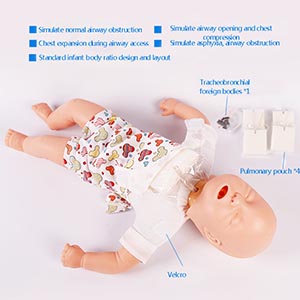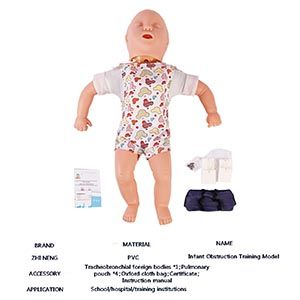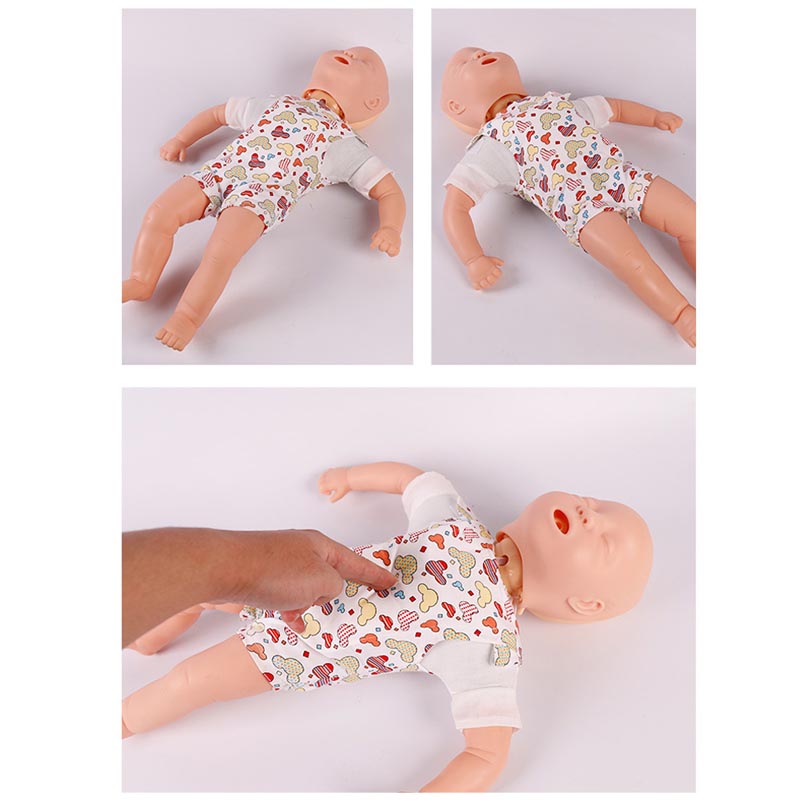In first aid training, accurate operation and response are often the difference between life and death. Especially in the treatment of infant airway infarction and cardiopulmonary resuscitation (CPR), the wrong treatment will not only lead to ineffective treatment, and may even bring irreversible damage. Therefore, how to reduce the operation error rate in actual first aid through efficient training is the focus of medical and training industry. Whether infant airway infarction and CPR simulators as training devices can significantly improve the skill level of first responders and reduce operational errors is worthy of further investigation.
1. Advantages of model training

Airway infarction and CPR model in infants
The Infant Airway Infarction and CPR model simulates the physiological state of infants in emergency situations such as airway infarction and cardiac arrest through high-precision simulation technology. Compared with traditional classroom explanations and theoretical learning, simulation training can provide a near-real operating environment, so that emergency personnel can practice the operation steps repeatedly without actual risk. Through this repeated practice, students can not only improve the accuracy of the movement, but also develop a timely and effective emergency response ability in response to emergencies.
2. Theoretical support for reducing operational errors
The research shows that simulation training can significantly reduce the probability of students making mistakes in actual first aid. According to the American Heart Association (AHA), first responders who underwent simulation training had a significantly higher success rate in real emergency care than those who did not receive training. Infant airway Infarction and CPR simulators use feedback mechanisms to remind participants in real time whether they have done the right thing, such as whether they have cleared the baby's airway correctly and whether they have performed CPR at the correct frequency and depth. This real-time feedback allows students to correct errors when they occur, reducing the incidence of misoperations.
3. Personalized training and skill improvement

The model also has a variety of training modes, which can simulate different clinical situations, such as complete or partial airway infarction, cardiac arrest, etc., to provide personalized training programs for emergency personnel. Each student has a different learning pace and operational precision, and by adjusting the training difficulty and situation, you can ensure that each student can train in the situation that best suits them. This personalized training method not only improves the actual operation ability of emergency personnel, but also enhances their ability to respond to emergencies.
4. Data support and verification
From multiple fields of data, simulation training has a significant effect on reducing medical errors. In the US first aid system, for example, about 80% of first responders reported that after simulation training, they were more confident and skilled in operating in real first aid scenarios. Especially in the case of infant airway infarction and CPR, simulation training can help first responders more accurately grasp the techniques, which can significantly reduce the number of injuries caused by errors.
5. Enhance personal growth and professional ability
In addition to reducing error rates, infant airway infarction and CPR simulation training also had a positive effect on personal growth. Through simulation exercises, first aid personnel can establish the ability to transform from theory to practice, and improve their judgment and calm response ability under pressure. Especially for beginners, the model provides a risk-free learning environment, which allows them to gradually overcome the anxiety and unease in operation, so as to perform more professionally in the actual work.
conclusion
The use of infant airway infarction and CPR models can significantly reduce the rate of errors in emergency procedures. Through simulation training, first aid personnel can master the technical essentials in many exercises and apply them freely in real scenarios. With this training equipment, emergency personnel can not only improve the accuracy of individual operations, but also respond more quickly and effectively in the face of complex clinical situations. Therefore, this model is not only an effective tool to improve first aid technology, but also an important guarantee to reduce medical risks and improve the success rate of life rescue.


